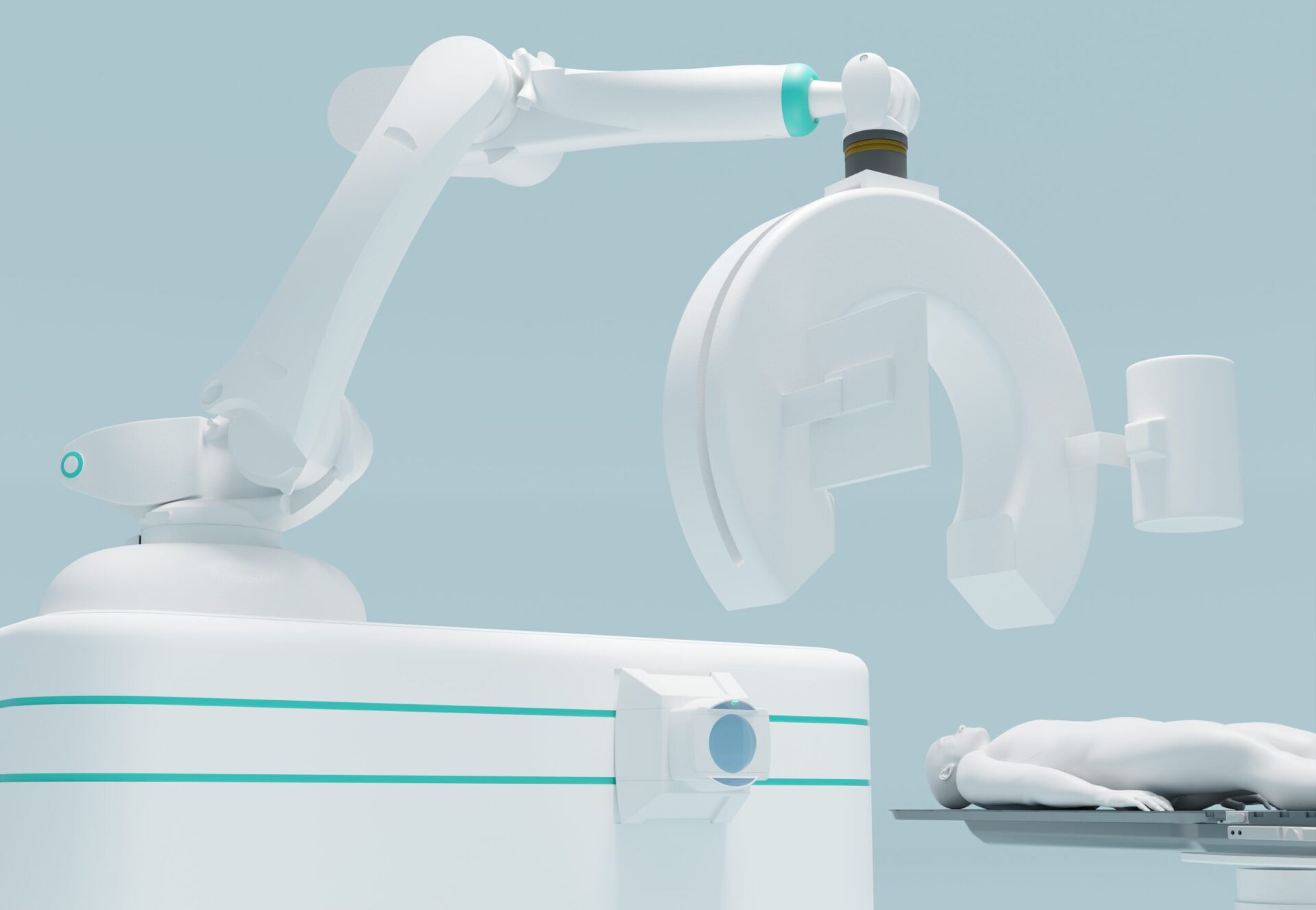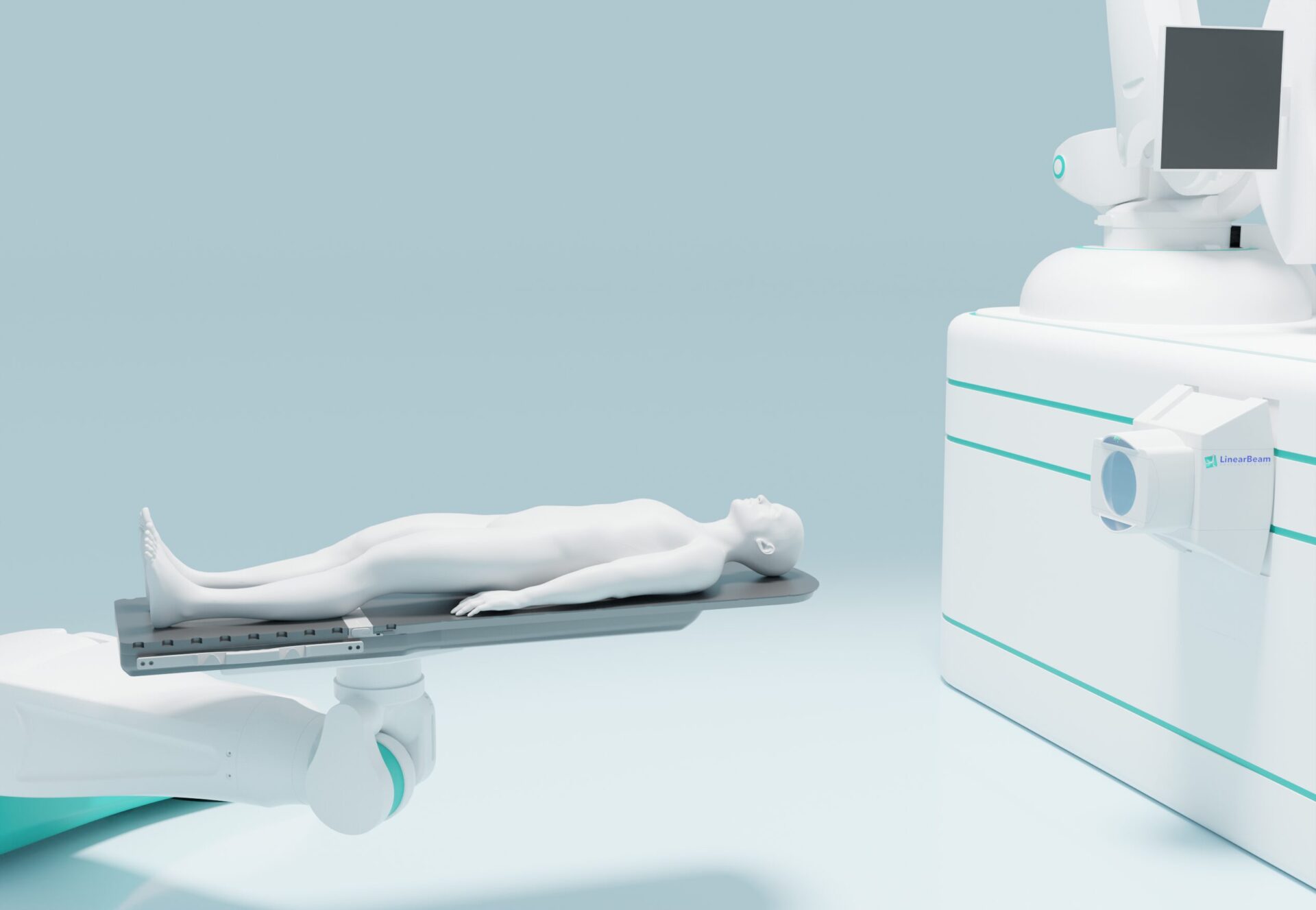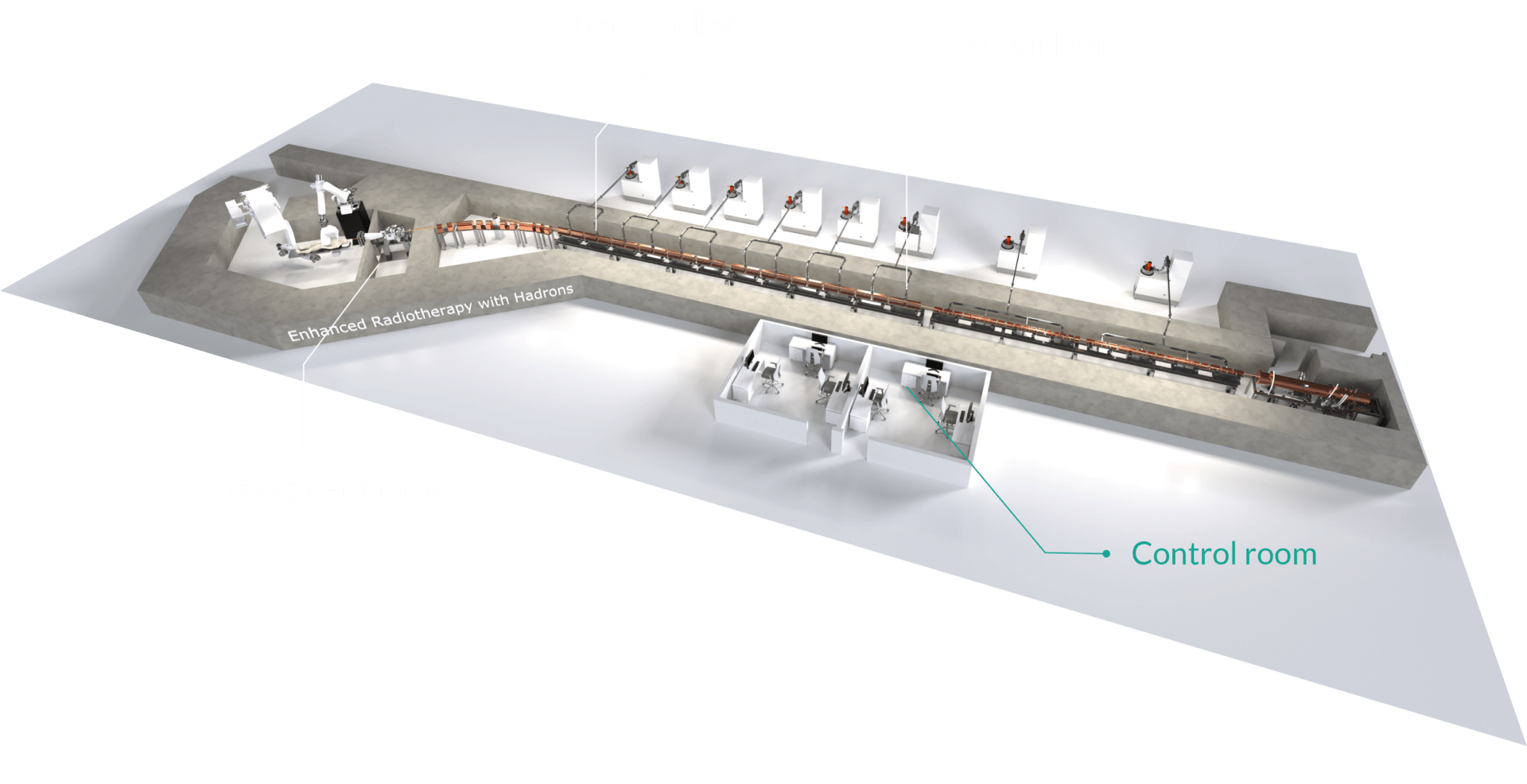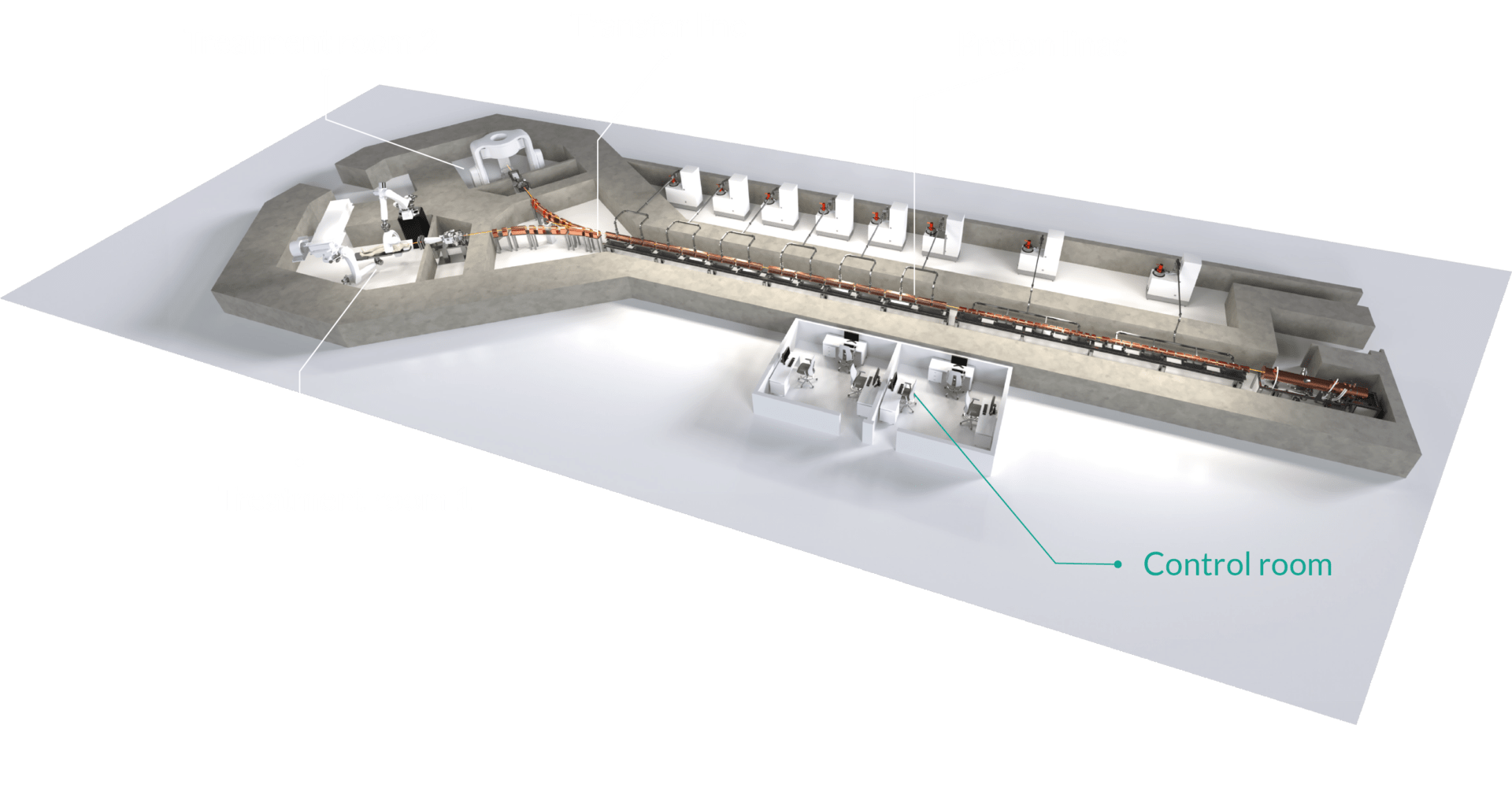ERHA SYSTEM
Enhanced Radiotherapy with HAdrons
ERHA, the proton therapy made in Italy
ERHA (Enhanced Radiotherapy with Hadrons) is the innovative proton therapy system developed by LinearBeam for the treatment of tumors.
This is a different and definitely more advanced technology than proton accelerators currently on the market as:

p-Linac, a linear approach
In order to treat tumors with protons, an accelerator is required i.e., a device that increases the speed and therefore the energy of the protons. Current existing systems use two different types of accelerators – cyclotrons or synchrotrons – which nowadays are deemed as a mature technology.
Cyclotrons represent the oldest technology and are still widely used worldwide.
Synchrotrons are a more advanced type of technology, yet they have a significant bulkiness and are also expensive.
The ERHA system on the other hand uses a p-Linac i.e., a linear acceleration system that can be easily placed in a container of about 24 m. in length and only 4 m. in width. Furthermore, the p-Linac has a more advanced technology than a cyclotron and combines many of the advantages of a synchrotron with greater cost-efficiency.
| Spot size | Energy modulation | Intensity modulation | |
|---|---|---|---|
| Cyclotron | |||
| Synchrotron | |||
| Linac | |||
| Comparison between LINAC and other particle accelerators used for ProtonTherapy | |||
The advantages of the linear accelerator
Robotic Patient Positioning System
The robotic platform allows the patient to be positioned according to the treatment plan.
The ITEL patent on the “Robotic patient positioning system in relation to at least one source of particles” ensures positioning with an accuracy level of less than 0.2 mm on the target, by using a stereoscopic 3D vision system and a dedicated CT.

The advantages of the robotic system:
TPS – Treatment Planning System
The Monte Carlo treatment plan module is able to track every single particle and reproduce every interaction with healthy tissue and cells during the path to lesion.
This is the most realistic method and allows calculating the effective dose also in difficult cases, when the calculation of dose delivered to the patient could only be carried out through the traditional way of water equivalent (pencil beam).
Both the treatment planning system for proton beams with radiobiological calculation and the full Monte Carlo technique run on MOM (Monte Carlo Optimized Mainframe).
This ensures a reasonable running time for each plan, thanks to the distributed computing and code optimization.

Software characteristics
A complete protontherapy
facility layout proposal


5 reasons to choose ERHA, the Enhanced Radiotherapy with Hadrons
Lower price compared to existing systems
Respect for the environment: our system has almost negligible both instant and induced radiations, it avoids the need for large amounts of concrete shielding and it reduces problems of decommissioning and disposal of radioactive waste at the end of its life (20-30 years)
Small footprint: our structure extends mostly in length and requires a surface area of less than 100sqm. Therefore, it has very little impact compared to existing PT structures
Easy to set up in a shielded corridor, a warehouse or a parking lot, as it requires only a small flat surface
Ease of management by operators: the number of devices is reduced and control is achieved by a single software interface
Linearbeam ERHA Proton Therapy System is not yet approved for clinical use.
